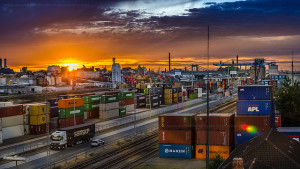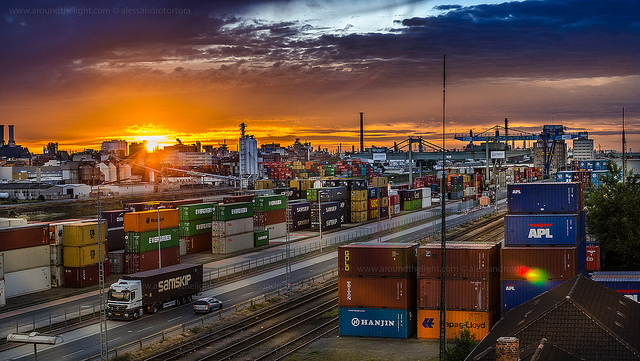 Free trade agreements (FTAs) like the latest Trans-Pacific Partnership (TPP) deal bolster not just trade among the partners but also the growth of container shipping, according to Drewry Maritime Research.
Free trade agreements (FTAs) like the latest Trans-Pacific Partnership (TPP) deal bolster not just trade among the partners but also the growth of container shipping, according to Drewry Maritime Research.
Drewry said in its latest analysis that it “has found evidence that supports the argument that free trade deals do encourage heightened trade growth, specifically in the container shipping arena.”
It said the signing of the TPP by 12 Pacific-rim nations, including the U.S. and Japan, on October 5 after five years of talks is the latest of the growing number of free trade agreements that “promise heightened container growth for participating countries.”
Covering about 40% of the world’s economy, the pact, if approved by U.S. Congress, will become the largest free trade deal since the North American Free Trade Agreement between the U.S., Canada, and Mexico came into force in 1994.
The deal aims to eliminate most tariffs on industrial goods and agricultural products as well as introduce new standards on intellectual property, competition, the environment and labor laws, among others.
Drewry noted that the number of active FTAs around the world is increasingly steadily, with the World Trade Organization reporting that as of April this year there were 262 “physical”—counting goods, services and accessions together—regional trade agreements in force.
It cited the pact between the 10 member states of the Association of Southeast Asian Nations (ASEAN) and China in 2005 and how the deal saw the 10-year compounded annual growth rate of China’s merchandise exports to ASEAN increase to 19%, compared to 17% annually in the decade before the deal. While seemingly not such a significant gain, Drewry pointed out that China’s annual rate to the rest of the world had dipped in that period to 13%.
As for ASEAN, Drewry said it “really started to accelerate beyond the overall trend from 2009 onwards, which suggests it takes a few years after implementation for the trade benefits to really kick-in.”
On the other hand, the impact on U.S. trade of its FTAs has been less immediate than seen with China-ASEAN, it continued. Since 2005, U.S. trade with non-FTA partners, such as with its second largest trading partner China, has grown faster than it has with its FTA partners. The faster pace of growth with non-FTAs explains why the share of U.S. merchandise trade for its FTA partners has barely moved in the last 10 years, even as new FTA partners were joining, said Drewry.
However, as with the China-ASEAN pact, U.S. trade growth with its FTA partners does seem to eventually be gaining momentum, said Drewry. “US exports and imports to FTA partners are now increasing at a faster pace. Between 2009 and 2014 exports to FTA countries have grown by 64%, versus 45% for all non-FTAs, while imports from FTAs have expanded by 57% against 47%.”
Further, available data also suggests that FTA partners benefit from increased trade at the expense of other economies.
It indicates that the U.S.’s FTA partners “have a much smaller, but growing, share of the containerised trade with the US than they do with total merchandise trade, controlling about 19% of the two-way box trade in 2014 (as measured in tonnes), up from 18% in 2013. China accounts for 30% while other non-FTA trading partners take the remaining 51%.”
The tonnage growth for FTA partners was about 10% for both exports and imports from/to the U.S., whereas growth was much lower for non-FTA partners, which dragged down the overall result by around 2 percentage points for U.S. imports and a whopping 6 points for exports.
“The liberalization of trade is a growing trend and one that will benefit container shipping companies in the long run,” said Drewry.
Photo: Alessandro Tortora





